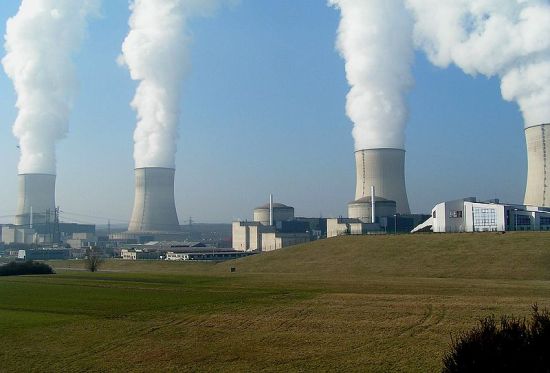A common refrain heard from boosters of the fossil fuel industry states that converting the US economy to run on renewables would be too costly and rely too heavily on unproven technologies.
Why risk tanking the nation’s economy, they ask, when coal, oil, and natural gas have powered our vehicles and heated our homes for over 150 years?
It’s a line of argument the green movement has struggled to counter, even as solar and wind prices plummet and nations such as Germany, Denmark, and even China have steeply ramped up their renewable energy production rates.
Help has arrived for clean energy advocates, however, in a new UN study that says the US can cut its greenhouse gas emissions by 80 percent from 1990 levels, using existing technologies and with little or no consequence to the national economy, by 2050.
“This US Deep Decarbonization Pathways Report shows that an 80 percent reduction of emissions by 2050 is fully feasible, and indeed can be achieved with many alternative approaches. This reports shows how to do it,” Jeffrey Sachs, director of the Earth Institute at Columbia University and the UN Sustainable Development Solutions Network, which commissioned the report, said in a statement. “I believe that the report provides a solid basis for negotiating a strong climate treaty in Paris in December 2015.”
 Ridding the US economy of greenhouse gas emissions requires three fundamental transformations, according to the report.
Ridding the US economy of greenhouse gas emissions requires three fundamental transformations, according to the report.
First, the energy efficiency of everything from automobiles and power plants to residential and commercial buildings must be improved. The fuel efficiency of vehicles, for example, would need to reach 100 miles per gallon by 2050, and buildings will require retrofits of their heating and lighting systems.
Next, the government and the private sector would need to invest in wind, solar and nuclear sources, as well as in technologies that capture carbon dioxide from smokestacks and store it in the ground — commonly known as carbon capture and sequestration — to reduce carbon from electricity production. The amount of renewable energy generation than exists today needs to be beefed up by much as 30 times to meet growing demand and reduce carbon pollution, says the report.
Finally, technologies that are fueled by gasoline will need to be adapted so they can be powered by electric or hydrogen. The report says 300 million alternative fuel vehicles are needed by 2050 in order to achieve the emissions reduction goal.
Scientists at the US Department of Energy’s Lawrence Berkeley National Laboratory (LBNL), Pacific Northwest National Laboratory, and San Francisco-based consulting firm Energy and Environmental Economics, Inc. prepared the report.
The researchers modeled four different scenarios: high renewable energy generation; high nuclear power generation; high use of carbon capture and sequestration; and a mix of each of these approaches.
“All four scenarios we tested assumed economic growth,” said co-author Margaret Torn of LBNL. “All of our scenarios deliver the energy services that strong economic growth demands.”
The impact of converting to a clean energy economy would be only a one percent reduction in GDP, although the authors concede there’s a high degree of uncertainty about the actual amount due to the difficulty of forecasting levels of consumption and the price of fossil fuels 35 years into the future. The researchers didn’t, however, consider the possible cost savings of reducing fossil fuel consumption, such as fewer illnesses and deaths associated with air pollution or less damage to infrastructure from frequent, extreme weather events.
“If you bet on America’s ability to develop and commercialize new technologies, then the net cost of transforming the energy system could be very low, even negative, when you take fuel savings into account,” said Jim Williams, chief scientist at E3 and lead author on the report. “And that is not counting the potential economic benefits of a low-carbon energy system for climate change and public health.”
Eliminating most greenhouse gas emissions by mid-century is crucial for achieving the internationally recognized goal of keeping temperature rise to no more than two degrees Celsius above pre-Industrial Age levels. As the world’s leading per capita emitter of carbon pollution, the US must achieve steep reductions in the amount of greenhouse gases it spews into the atmosphere for there to be any chance of keeping temperature rise to a minimum.
Here’s why China’s climate pledge might not be such a great leap forward. Read more here.
It is “critical” for the government to regulate energy production and consumption and for market institutions to support innovation and investment in clean energy, the report states.
President Obama pledged in November to cut US emissions by 26-28 percent from 2005 levels by 2025. The UN report demonstrates that Obama’s pledge can be achieved on the path to longer-term cuts.
From Monday, international climate negotiators will meet in Lima, Peru for a week and a half of climate negotiations. Diplomats have pledged to adopt an international climate change agreement by the end of next year, and the Lima meeting is seen as crucial to keep negotiations on track.
“For years, global climate meetings were the place where countries would say to each other: ‘you go first, you know this issue is important,'” wrote Daniel Mittler, the Political Director of Greenpeace International. “Now we are moving to a different world. Now countries say: ‘I can act, if you can act.’ This is a major mental shift. This thinking makes collective action a possibility.”




